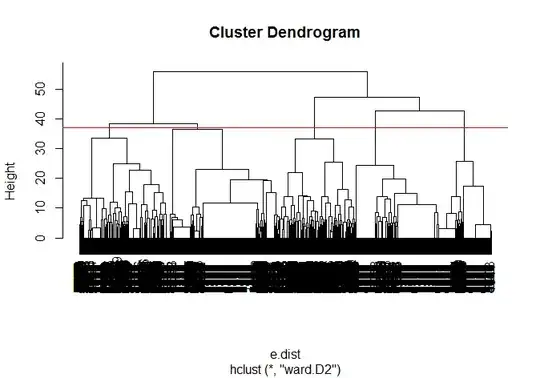I am trying to build a basic content-based recommender engine based on movie genres, the data set is from MovieLens. Some of the movies have more than 2 genres.
part of my code:
head(genre_matrix2,15)
Action Adventure Animation Children Comedy
1 0 1 1 1 1
2 0 1 0 1 0
3 0 0 0 0 1
4 0 0 0 0 1
5 0 0 0 0 1
6 1 0 0 0 0
7 0 0 0 0 1
8 0 1 0 1 0
9 1 0 0 0 0
10 1 1 0 0 0
11 0 0 0 0 1
12 0 0 0 0 1
13 0 1 1 1 0
14 0 0 0 0 0
For example, the first movie belongs to Adventure, Animation, Children and Comedy genres.
Because there are total 18 genres, and maybe some movies have same genres matched. I want to do the cluster analysis, make it in a more precise and small categories. For example, if 3 movies all have Comedy, Action and Romance genres, they are more likely to be in the same categories.
I used hierarchical cluster analysis:
e.dist <- dist(genre_matrix2, method="euclidean")
h.E.cluster <- hclust(e.dist)
plot(h.E.cluster)
h.cluster <- hclust(e.dist, method="ward.D2")
plot(h.cluster)
cut.h.cluster <- cutree(h.cluster, k=5)
table(cut.h.cluster)
1 2 3 4 5
1675 1159 1844 2001 2446
Then I use the Elbow Method to see if this is Optimal number of clusters:
fviz_nbclust(genre_matrix2,
FUNcluster = hcut,
method = "wss",
k.max = 18
) +
labs(title="Elbow Method for HC") +
geom_vline(xintercept = 5,
linetype = 2)
There's no elbow in this, does it mean that I souldn't do cluster analysis of this? Any suggestion is welcomed!

